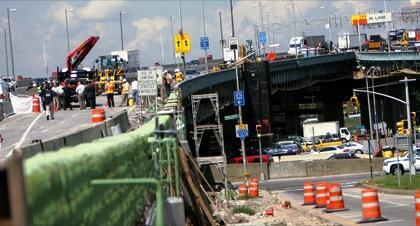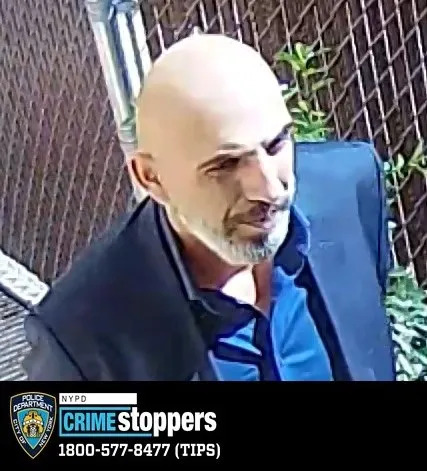By Connor Adams Sheets
A College Point scientist has raised concerns about the environmental impact of work recently undertaken by the MTA to improve the Throgs Necks Bridge.
Dr. James Cervino, a professor of environmental science and biology at Pace University and a scientist at Woods Hole Oceanographic Institute, plans to undertake a series of tests to determine whether the blasting of decades-old lead paint off the bridge earlier this year released dangerous amounts of lead or mercury into the environment.
The bridge work has met all environmental requirements and adhered to federal, state and city regulations, the Metropolitan Transportation Authority said. According to a report the agency released in November, when the work ended for the winter to be resumed for a short time in the spring, there were 103 dust-producing work days so far during the project but none released into the air levels of lead or other dangerous metals considered dangerous to health under federal regulations.
“Everything was done under full containment and under federal regulations. We monitor the air in a number of different spots to make sure none of the lead gets into the air,” said Judie Glave, an MTA Bridges and Tunnels spokeswoman.
But Cervino said the agency should have run more tests on the soil and water under and near the bridge in order to ensure that residents of neighboring communities and the federally protected wetlands and water under the bridge are not being contaminated with dangerous toxins.
He plans to run his own tests, in conjunction with Pace and Woods Hole and with the assistance of a New York University student and a St. Francis Preparatory School student, in order to see if the soil and water have been contaminated.
“If they’re scraping paint and blasting paint off, I can see that they wouldn’t get that much in the air because it’s falling down,” he said. “Directly under where they’re blasting is a baseball field, a sports complex and federally protected wetlands. It’s going in the water, thereby posing threats to the coastal wetland zone, which contains the food chain. I have serious concerns about that, not to mention kids playing in the fields.”
Glave countered Cervino’s contention, saying that the containment methods the MTA is using, which have cost the agency $1 million so far in the course of the $96 million rehabilitation project, protect the surrounding areas.
“As far as what Mr. Cervino says about it going into the water and soil, the lead would have to go into the air before it can get into the water or soil, so we wouldn’t necessarily need to test them,” she said.
But Cervino said residents of neighborhoods near the bridge, which connects Queens and the Bronx, have come to him repeatedly with concerns about dust from the construction coming in their windows.
State Sen. Frank Padavan (R-Bellerose) also sent a letter to the MTA calling on the agency “to immediately take steps to deal with this serious problem.”
Randy Schwartz, who owns an apartment in the Le Havre community located near the bridge, said she believes the MTA should take any needed measures to protect local residents.
“I think its horrendous, being exposed to toxic metals,” she said. “I don’t know what’s in that paint.”
Reach reporter Connor Adams Sheets by e-mail at csheets@cnglocal.com or by phone at 718-229-0300, Ext. 138.


































